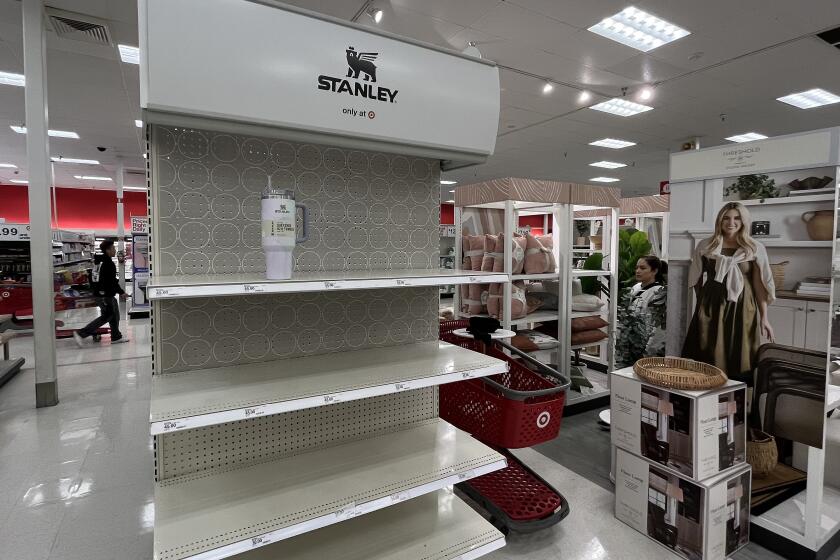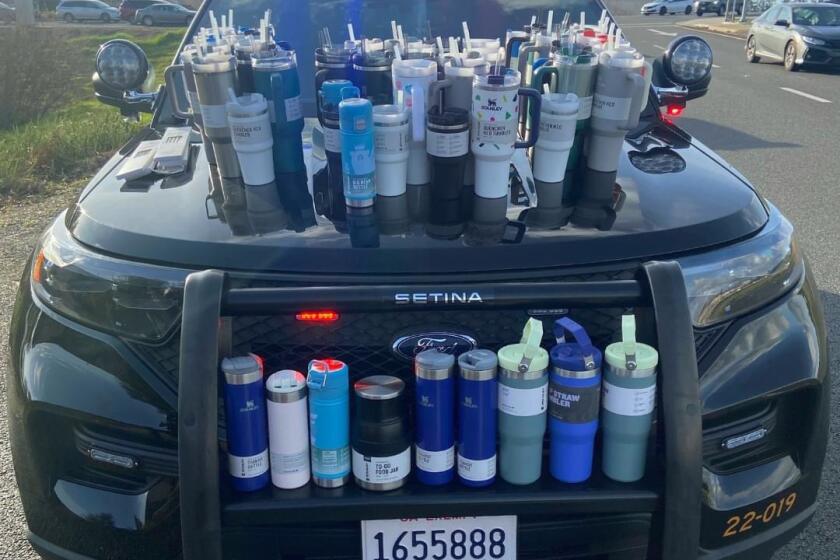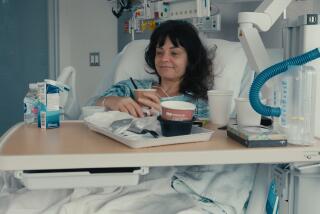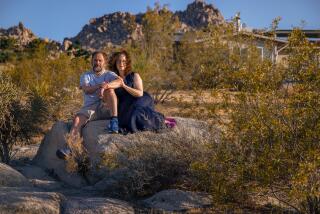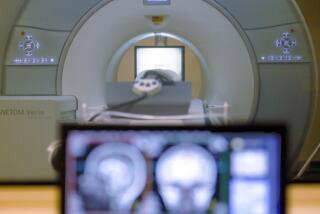The best reason to drink more water? It’s not Stanley cups or Hydro Flasks, it’s kidney stones
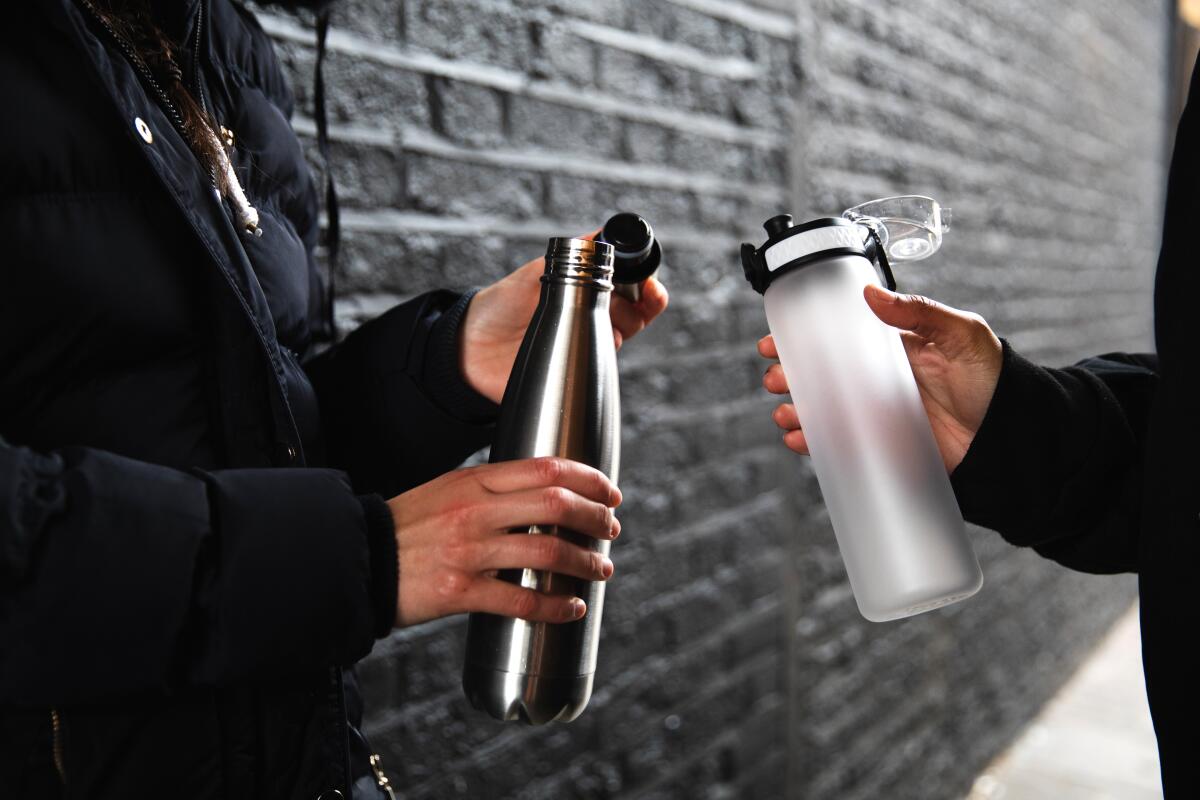
Whether you’re Team Owala or Team Hydro Flask, it should go without saying that the bottles don’t matter if you’re not actually drinking water out of them.
And that goes for all those winsome young TikTokers who have made Stanley cups such a hot accessory that people are storming Target the minute a new color comes out.
Despite our alleged addiction to hydration, one of the most painful low-hydration-related conditions is on the rise, numerically and demographically. Once considered an affliction of older obese white men, kidney stones are now increasingly common among children and Black and brown communities.
Also women. According to a 2018 report from the Mayo Clinic, women are now four times more likely to get kidney stones than they were 40 years ago.
Collectors and sellers attribute the craze to the limited availability and collaborations with sellers like Starbucks, as well as to viral TikTok videos.
If you don’t think this is an alarming trend, then you have never had a kidney stone.
I have, despite the fact that I own enough insulated water bottles to kit out an entire soccer team and I feel like I’m always sipping from one of them.
But feelings are not facts, as I discovered when I wound up in the emergency room, begging for very strong drugs or, failing that, a quick death.
My previous knowledge of kidney stones was vague and secondhand. I remember my father had them many years ago and I knew they were painful. But I’m healthy, eat sensibly (for a carnivore), exercise daily and (I thought) drink plenty of water — why would I worry about such things?
Because those spiky little suckers just happen out of nowhere, apparently, like miscarriages and seizures, to a certain percentage of the population. Made up of minerals and salts, they often hang out in the kidneys or blithely pass through the urinary tract without bothering anyone.
But some of them will take you all the way down.
Kidney stone survivors will no doubt recognize my tale. I had just met my daughter for a short hike with our dog when I felt a mild cramp. A block or so later, the cramp had advanced to “weird pain.” A block or so after that, I told my daughter I wouldn’t be able to go any further. We turned around and got about 50 yards before I leaned against an obliging fence. “I’m going to vomit,” I said as I fell to my knees. “I’ll get the car,” she replied.
Stanley cup mania landed one Sacramento woman in handcuffs last week after she wheeled a shopping cart full of the reusable water bottles out of a store without paying, authorities said.
We had taken two cars so she drove me to mine and I convinced her and myself — because on some level I couldn’t believe this was happening — that I could drive home. I was sure I would feel better when I sat down and took a sip of water. She followed me, with the dog. But as I drove, the pain worsened and I realized I needed to pull over. Seeing a sign for our local emergency room, I thought maybe I should just pull over there.
When I got out of the car, the pain darkened my vision and it seemed only sensible to lie down between my car and its neighbor. Seeing her mother on the asphalt, my daughter sought help and a nice orderly helped hitch me onto a wheelchair and take me to the emergency waiting room. There, convinced I was going to pass out, I lay down again. On the waiting room floor.
I know.
The whole time, one part of my splintering mind was racing to put what was happening in some kind of reasonable context. It felt like something was exploding, but on the left side so it couldn’t be my appendix. An ovary? It went all the way through the back so maybe a kidney? Did kidneys randomly rupture? Or was I just having some hallucinatory episode? I was hiking just 20 minutes ago, after all.
Yet there I was, lying on a waiting room floor, so something was definitely wrong. I have, over the course of my adult life, endured a fair amount of abdominal pain — menstrual cramps that left me bedridden and gasping, an excruciating miscarriage, two prolonged labors, recoveries from cesareans, not to mention a dislocated knee cap and a torn meniscus.
All of which had hurt like hell, but never enough to sink me to the floor.
More lovely people helped me back onto the wheelchair and took me into the emergency room while I sat jackknifed trying to describe, in gasps, the nature of the pain — like a javelin had been shoved into my abdomen and out my back — while intermittently apologizing for the drama. I felt vaguely ashamed that there was no javelin, or blood and splintered bone — this level of agony surely should involve obvious and inarguable physical evidence.
Just ask any one of the 300,000 Americans who, in any given year, develop kidney stones: What if the excruciating pain of passing one of those little devils could be prevented by strapping yourself into a make-believe runaway mine train, throwing your hands in the air and enduring G-forces as high as 2.5 for about three minutes?
My husband arrived as I was helped onto a gurney in the hall. The next six hours were a blur. When the pain briefly subsided, I regretted my decision to come to the hospital for what might turn out to be gas or something equally mundane and embarrassing. When it returned, I wondered, occasionally audibly, what I had done to deserve to die on a gurney in a hallway with my hiking boots still on. I got an IV with an NSAID, which helped until it didn’t. By the time a scan confirmed that a stone was blocking my kidney, causing renal colic, I was a roiling puddle of agony, hysterically demanding that my husband emulate Shirley Maclaine in “Terms of Endearment” and go get me stronger medication.
When I could think, I conjured all those movie images of the hero still fighting or driving after being shot/stabbed/thrown off a cliff — if filmmakers really wanted to show superhuman endurance, they would give their main characters kidney stones. Except then the bad guys would definitely get away or destroy the world because the hero would be too busy moaning “someone please help me,” like I was.
As the kindly nurse finally administered morphine, I could only whimper, “What if it doesn’t work?” — perhaps removing the whole kidney, right there in the hall, would be a better option. “It’s morphine,” he said. “It will work.”
And it did, so suddenly and mercifully that after thanking God and all the angels and saints, I was back to wondering if I had hallucinated the whole thing. I was not lying in a pool of my own blood and entrails; I had not (thank heavens) been diagnosed with some life-altering condition or illness. Neither had an alien forced its way out of my stomach only to skitter along the hospital floor (though at certain points this outcome had seemed not just possible but probable).
After a couple of hours of monitoring, the doctor sent me home, with a couple of prescriptions. I felt OK. Wrung out like a dishrag, terrified that the pain would return and deeply suspicious of my internal organs, but otherwise OK.
It made no sense. How does a person go from feeling fine to assuming death is nigh, then back to feeling fine again in a matter of hours?
Kidney stones.
Although some will pass with minimal or no pain, between 500,000 and a million sufferers wind up in the ER each year. If the stone is large enough (mine was not), various medical procedures may be required — in 2019, soccer icon Pelé had to have one surgically removed.
As with miscarriage, you may not know that some of your nearest and dearest have endured similar ordeals until you share yours. I mentioned mine to a cousin and she immediately relayed a similar story (which instantly made me feel better because she is in much better shape than I am).
We both agreed that this not-uncommon but highly traumatic and potentially life-changing experience is strangely underrepresented in media of all types, especially given the rising rates and connection to climate change.
Yes, climate change. Kidney stone rates are already higher in areas with hot, dry summers; in certain circles, the southeastern United States is known as the kidney-stone belt. As global warming sends heat waves over larger portions of the world, it’s only going to get worse. According to an article published in the Proceedings of the National Academy of Sciences, the percentage “of the U.S. population living in high-risk zones for nephrolithiasis [kidney stones] will grow from 40% in 2000 to 56% by 2050, and to 70% by 2095.”
Seventy percent, people.
So some of us really need to stop fetishizing water bottles and focus on how often we are drinking out of them.
Google “kidney stones” and you will find all manner of things you could do to prevent them: exercise more, or less; increase or decrease your calcium; get more vitamin C, but not in supplements; avoid high oxalate food, which include peanuts, spinach, chocolate and rhubarb.
But everyone agrees on hydration.
Concerned that my ballpark-peanut addiction (and penchant for strawberry rhubarb jam) had put me into this mess, I asked my own physician if I should stop eating certain things. He shook his head.
“Moderation in all things,” he said. “Except water.”
The general consensus is that women living in a temperate climate should drink about 3.7 liters or 125 ounces of water a day. That’s almost eight 16-ounce servings, which is, undeniably, a helluvalot of water. But you better believe I’m counting the ounces.
And not just of water. To make things more interesting, not everyone agrees that good hydration is best achieved with water, which has a tendency to run right through you. Some studies suggest that orange juice, tea or milk (all of which fit nicely in any insulated flask) are more effective.
Also lemonade, which, like orange juice, has the added benefit of providing vitamin C in its natural state, and can help prevent the stones from forming, research indicates.
As luck and SoCal residency would have it, I have a lemon tree in my backyard. Also a rejection of TikTok, I have chosen a large Yeti to hold my endless quantities of homemade lemonade and if I miss your call or text, it is undoubtedly because I am either squeezing lemons or in the bathroom.
When life gives you kidney stones, make lemonade. But be sure to drink it as well.
More to Read
The biggest entertainment stories
Get our big stories about Hollywood, film, television, music, arts, culture and more right in your inbox as soon as they publish.
You may occasionally receive promotional content from the Los Angeles Times.
